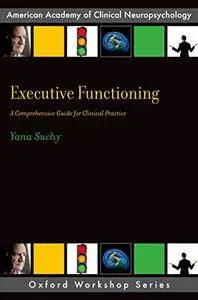Yana Suchy, "Executive Functioning: A Comprehensive Guide for Clinical Practice"
English | ISBN: 0199890323 | 2015 | 348 pages | PDF | 2 MB
English | ISBN: 0199890323 | 2015 | 348 pages | PDF | 2 MB
Executive Functioning: A Comprehensive Guide for Clinical Practice is the first book to offer an in-depth, comprehensive, and clinically applicable analysis of executive functioning (EF), as contrasted with "frontal-lobe functioning." Throughout the book, care is taken to stay true to the EF construct, and to use function, not structure, as the organising framework. The book is organised into four parts. The first part provides a brief overview of historical, theoretical, and clinical influences on how the construct has been conceptualized, studied, and ultimately defined. Part II describes five subdomains of EF, including Executive Cognitive Functions, Meta-tasking, Response Selection, Initiation/Maintenance, and Social Cognition. For each subdomain, the book reviews contributing elemental neurocognitive processes, neuroanatomic underpinnings, the utility of the subdomain in execution of daily tasks, as well as associated clinical syndromes. For each syndrome, cognitive and personality changes in daily life, as well as presentation during neuropsychological assessment, are described, and typical clinical populations characterized by each syndrome are briefly reviewed. Part III describes assessment methods, addressing both challenges and solutions in the neuropsychological evaluations of EF. An integration of information across record review, clinical interview, behavioural observation, and standardised assessment is advocated, as is consideration of assessment results within the contextual complexities of a given patient. Lastly, Part IV provides an overview of populations that are characterized by deficiencies in EF, with a chapter each devoted to neurodevelopmental, neurodegenerative, and neuropsychiatric disorders, as well as acquired brain insults and medical conditions.



